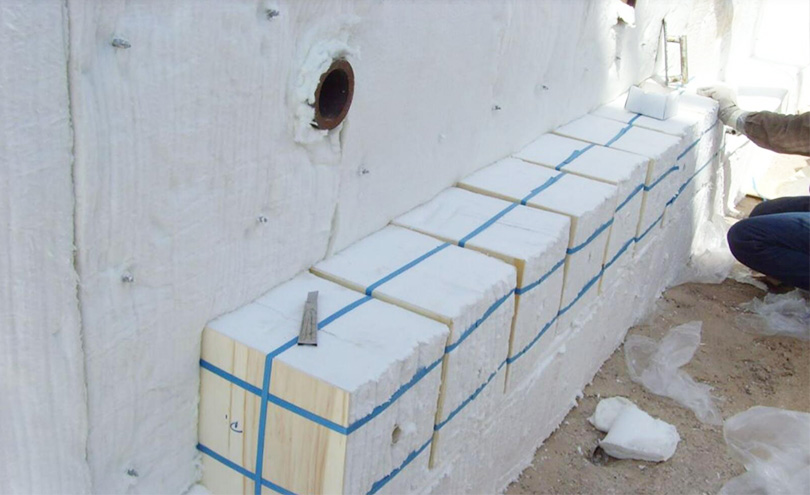Ceramic Fiber Module: High-Efficiency Furnace Lining Solution for Modern Thermal Systems
In industrial heating systems, the choice of insulation materials directly affects energy consumption, equipment lifespan, and operational stability. As global industries move toward higher thermal efficiency and reduced emissions, Ceramic fiber module solutions have become a preferred furnace-lining material across metallurgy, petrochemical, ceramics, machinery, and environmental protection sectors. Designed for rapid installation, excellent thermal performance, and long-term reliability, Ceramic fiber module technology is reshaping how companies build and maintain high-temperature equipment.
A Ceramic fiber module is manufactured from high-quality ceramic fiber blankets that are folded, compressed, and anchored into predesigned block structures. This unique modular construction brings significant advantages over traditional refractory bricks and castables. Because the material maintains tight fiber density and internal elasticity, a Ceramic fiber module can expand slightly during heating, reducing gaps and maintaining better thermal integrity throughout the furnace lining. This feature minimizes heat leakage and ensures consistent temperatures inside the thermal chamber.
One of the most notable characteristics of the Ceramic fiber module is its extremely low thermal conductivity. This results in high insulation efficiency, making it possible to reduce fuel consumption while achieving rapid heat-up and cool-down cycles. Industries that rely on frequent heating operations, such as forging, heat treatment, and ceramic firing, benefit significantly from the energy savings and increased output efficiency provided by Ceramic fiber module installation.

The lightweight nature of the Ceramic fiber module also contributes to improved furnace performance. A lighter lining reduces the heat capacity of the entire system, allowing faster temperature adjustments and lowering operational costs. This stands in clear contrast to heavy refractory brick linings, which require longer heating times and retain excess heat after shutdown. By adopting Ceramic fiber module systems, factories can shorten production cycles, enhance temperature control accuracy, and respond more flexibly to variable process requirements.
Installation efficiency is another major advantage. The modular design of the Ceramic fiber module includes a built-in anchoring system—typically stainless-steel or heat-resistant alloy anchors—that allows rapid mechanical attachment to furnace shells or steel structures. Installers can simply position and tighten each Ceramic fiber module, reducing labor hours and minimizing furnace downtime. During maintenance or relining projects, this fast installation is especially valuable, as it shortens the shutdown period and speeds up the return to full production capacity.
Durability is equally important in industrial environments, and the Ceramic fiber module is engineered to handle demanding conditions. It exhibits excellent resistance to thermal shock, chemical corrosion, and mechanical vibration. Even after long-term exposure to temperatures ranging from 1000°C to 1500°C (depending on the fiber grade), the structure of the Ceramic fiber module remains stable. In high-velocity flame zones or chemically reactive atmospheres, specially formulated modules offer improved erosion resistance and reduced fiber loss, further extending service life.

In addition to industrial furnaces, Ceramic fiber module solutions are increasingly used in pollution-control equipment, boilers, thermal oxidizers, and incinerators. Their ability to provide uniform thermal insulation while withstanding harsh operating environments makes them ideal for modern energy-intensive systems that require both performance and reliability.
To support evolving industry standards, manufacturers are now developing advanced versions of the Ceramic fiber module, including high-temperature polycrystalline modules, zirconia-reinforced modules, and modules with enhanced structural rigidity. These innovations expand the range of achievable operating temperatures and improve insulation efficiency for next-generation furnace designs.
As industries prioritize sustainability, Ceramic fiber module materials play a crucial role in reducing overall carbon emissions. Lower fuel consumption, extended furnace life, and fewer maintenance shutdowns translate directly into reduced waste and improved environmental performance. For companies pursuing cleaner, more efficient production methods, adopting Ceramic fiber module systems represents a strategic investment in long-term operational success.
With its combination of high insulation efficiency, rapid installation, structural reliability, and adaptability to various furnace designs, the Ceramic fiber module continues to stand out as a leading solution in high-temperature insulation technology. As demand for energy-efficient industri
Inquiry Now
Please leave your e-mail and we will contact you as soon as possible
contact us
Your satisfaction is our top priority. Whether you have questions, need support, or want to share feedback, our dedicated team is ready to assist you every step of the way.